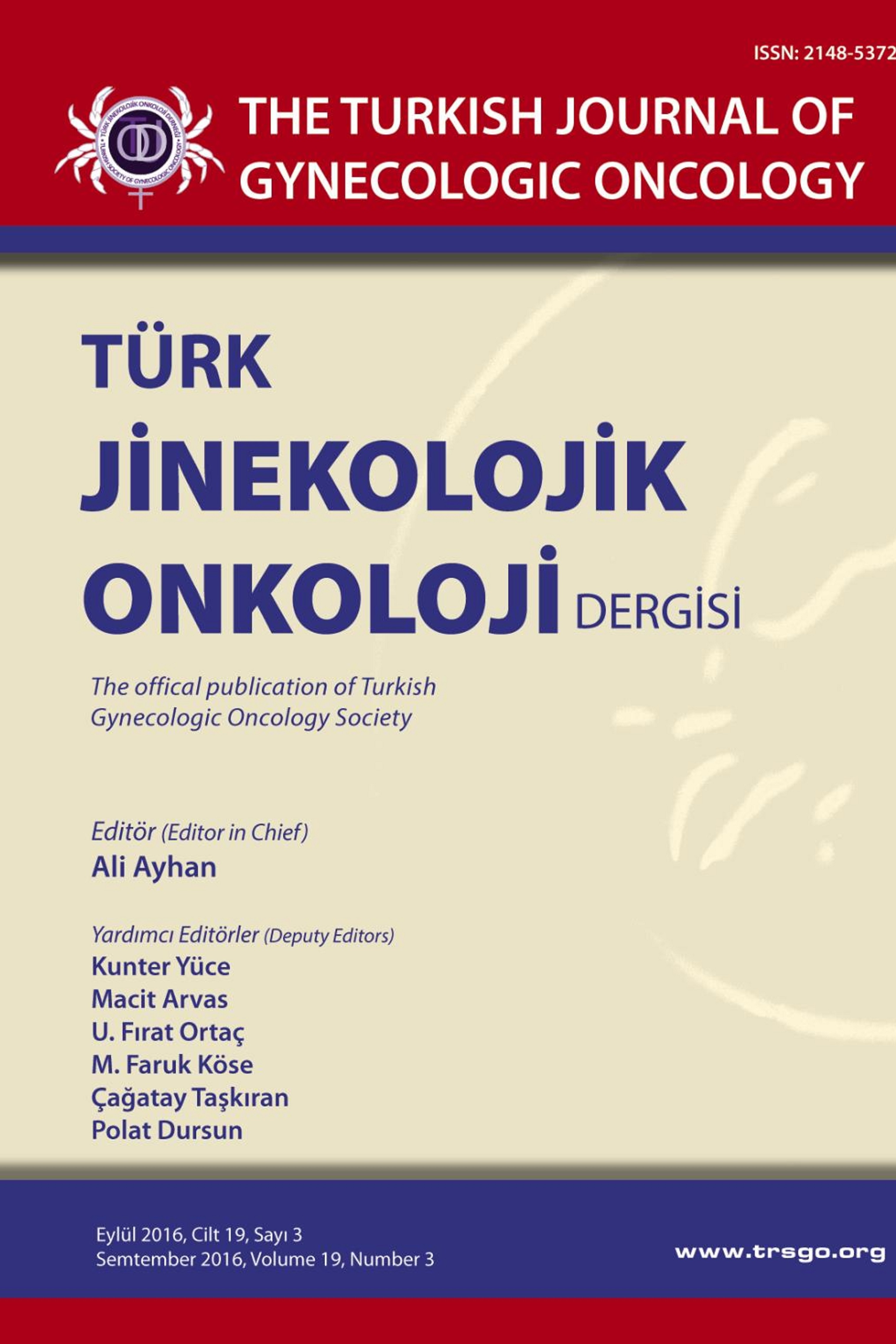GEBELİKTE ADNEKSİYEL KİTLE YÖNETİMİ: 50 OLGU DENEYİMİ
Amaç: Gebelikte adneksiyel kitle olgularımızın geriye dönük incelenmesi Materyal ve Metod: Son 5 yılda gebelikte adneksiyel kitle nedeniyle kliniğimizde tedavi edilen 50 olgunun geriye dönük kayıtları incelendi. Arşiv kayıtlarından olguların demografik özellikleri, gebelik haftaları, histopatolojik bulguları ve perinatal sonuçları kaydedildi. Acil durumların dışında çıkarılan materyal frozen incelemeye gönderildi. Postoperatif dönemde hastalar tokoliz için yakın değerlendirilmeye alındı ve gereğinde tokoliz tedavisi uygulandı. Verilerin değerlendirilmesinde tanımlayıcı istatistik kullanıldı ve değişkenler % ve ortalama±standart sapma olarak kullanıldı. Bulgular: 16 olgu torsiyon yada abdominal kanama nedeniyle acil şartlarda operasyona alındı. 11 olgu elektif olarak opere edildi ve 23 olguya değişik nedenlerle yapılan sezaryenler esnasında tanı konuldu. Opere edilen olguların %8'inin birinci trimesterde, %46'sının ikinci trimesterde ve yine %46'sının 3. trimestrede olduğu belirlendi. Histopatolojik incelemede en fazla Matür kistik teratom tespit edildi. Adneksiyel kitlelerden 3 olguya unilateral salpingoooferektomi yapıldı, diğer olgularda kistektomi uygulandı. 2 olgumuz jinekolojik nedenler dışında saptanan pelvik kitleler olup biri lipom diğeri mezenter kisti lehine değerlendirildi. Sezaryen sırasında insidental olarak tespit edilen ve kistektomi yapılan olgulardan iki tanesinde Borderline tümör tespit edildi. Olgularımızın hiçbirinde iki borderline tümör hariç, malign adneksiyel kitleye rastlanmadı. Sonuç: İlk trimesterde spontan regresyon olabileceği dikkate alınarak olgulara konservatif yaklaşılmalı, kuvvetli malignite potansiyeli olan yada rüptür, torsiyon gibi durumlarda acil cerrahi yapılmalıdır. Persiste eden kitleler ikinci trimester yani 14-22. gebelik haftaları arasında çıkarılmalıdır.
Purpose: Retrospective analysis of adnexal masses in pregnancy. Material and Method: We analysed the pregnancies who underwent treatment due to adnexal mass for the last five years in our clinic. From the archieve data, demographic properties of cases, pregnancy weeks, hystopathologic and perinatal results are obtained. Frozen section examination of materials sent from except the emergency situations. Postoperatively patients were evaluated close to tocolysis, and tocolysis were treated when necessary. Descriptive statistics were used to assess the data and variables used in % and the mean ± standard deviation. Findings: 16 cases underwent emergent operation due to torsion or abdominal bleeding. 11 cases were operated as elective, in 25 cases adnexal masses were diagnosed in cesarean section. 8% of the cases who were operated on first-trimester, 46% of the cases on second trimester, and again 46% of the cases on 3 trimester were. Mature cystic teratoma is the most common hystopathologic type of the adnexal masses diagnosed in pregnancy. Salpingooopherectomy unilateral adnexal masses in 3 cases underwent cystectomy was performed in all cases. Causes of gynecologic pelvic masses were detected except for two one case of mesenteric cyst, lipoma and the other were in favor. In two adnexal masses diagnosed incidentally in cesarean section, borderline ovarian tumor is diagnosed. None of the patients except two borderline tumors, malignant adnexal mass was detected. Results: It must be remembered in mind that adnexal masses can undergo regression in the first trimester and conservative management must be planned. In cases with high malignancy potential and in the case of rupture and torsion operation must be planned. Persistant adnexal masses must be extirpated in the second trimester between 14 and 22 week of pregnancy.
